How to Bleach Wood Furniture
I am obsessed with finding old furniture and refinishing it. One of my favorite ways to update them is to bleach them. I love they way that the wood looks when its been bleached. It has a natural wood look that really fits with. my aesthetic. I want to show you how to bleach wood for an updated look.

In this post I want to share an assortment of pieces I have bleached on my own, with incredible results.
Best Woods to Bleach
Woods that you shouldn’t bleach
Maple and Pine are usually not recommended because they are already so light, it will leave them kind of lifeless.
Woods such a cherry, redwood, rosewood, mahogany and cedar do not take well to bleaching, so keep this in mind if you are thinking of bleaching a piece of furniture.
Step by Step Instructions for How to Bleach Wood
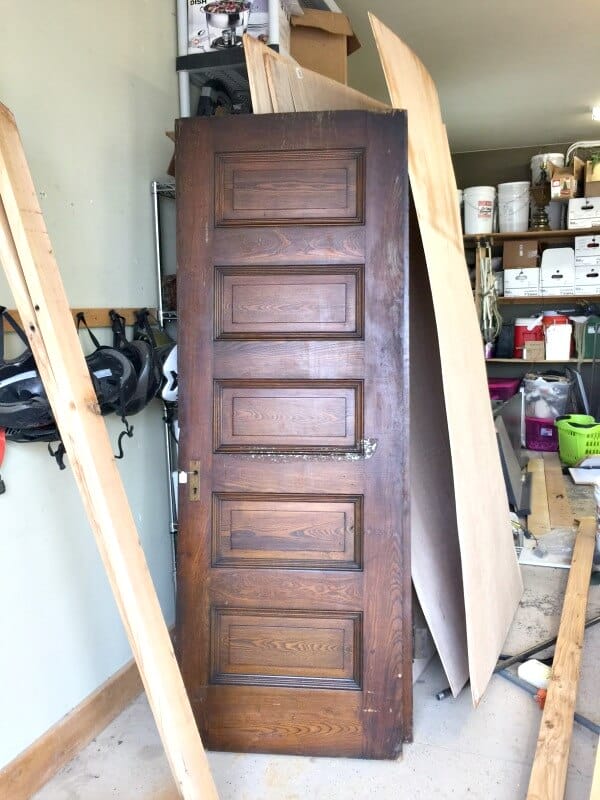
First, when you choose your furniture make sure that it is the right kind of wood. I am showing these antique doors. I wanted to remove the varnish and bleach them.
Here is what I used to complete this project
Tools you’ll need
This post contains affiliate links
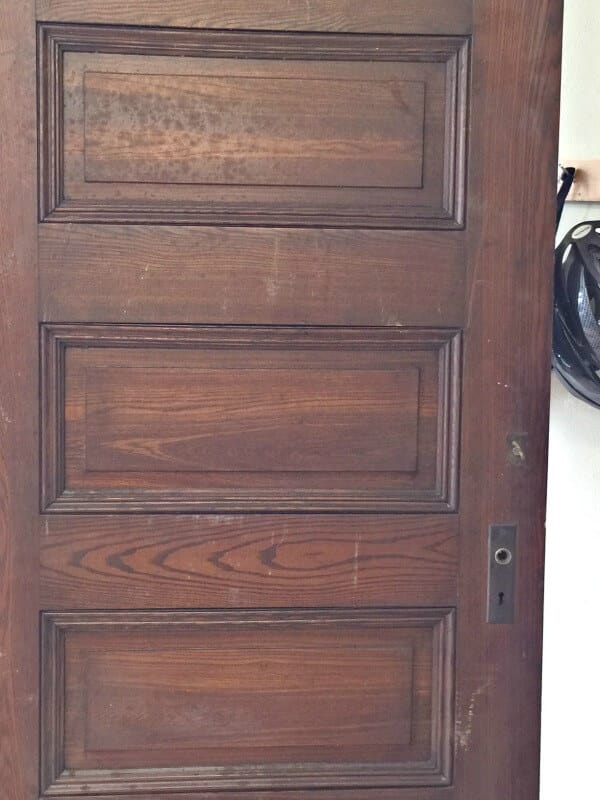
Step 1
Strip yours furniture of its original varnish or stain. I choose to use the oven cleaner method. It is very effective at removing all the vanish and stain.
Step 2
Sand the furniture and smooth it out to your preferred finish.
Step 3
Using a rag, rub bleach onto the entire surface of the wood. Wipe with the wood grain. I like to let it sit and dry and then add one more coat if I want it lighter. The great thing about bleaching wood is it will help to even out the wood tones.
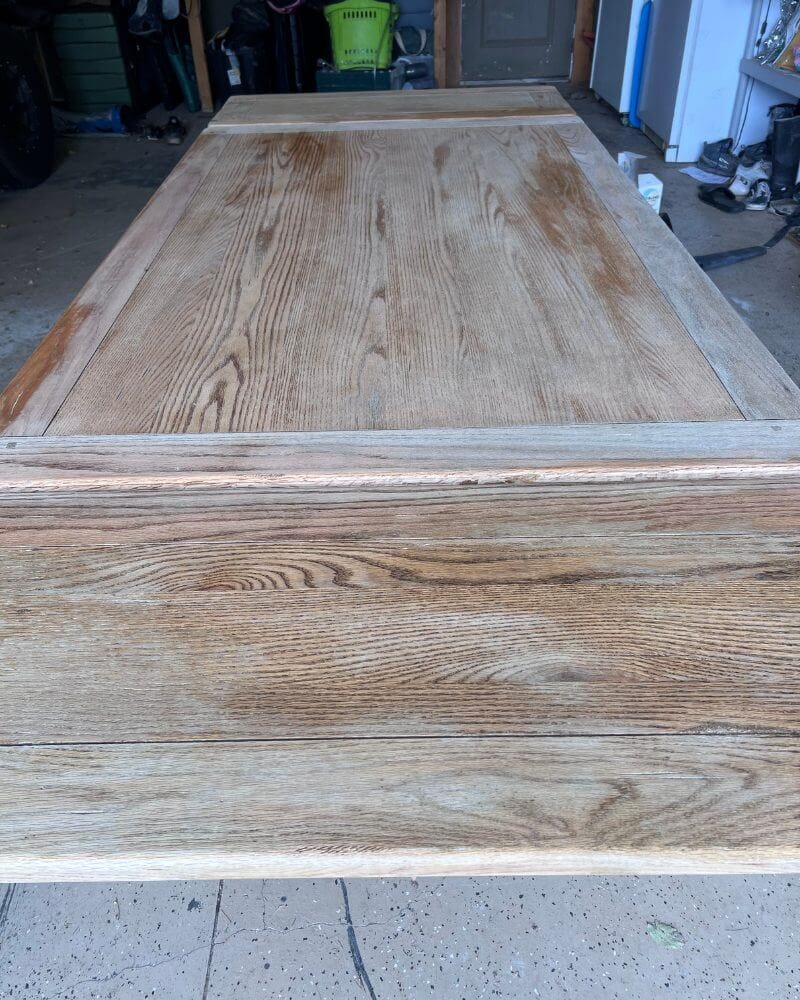
This is after one coat of bleach. You can see it is still drying.
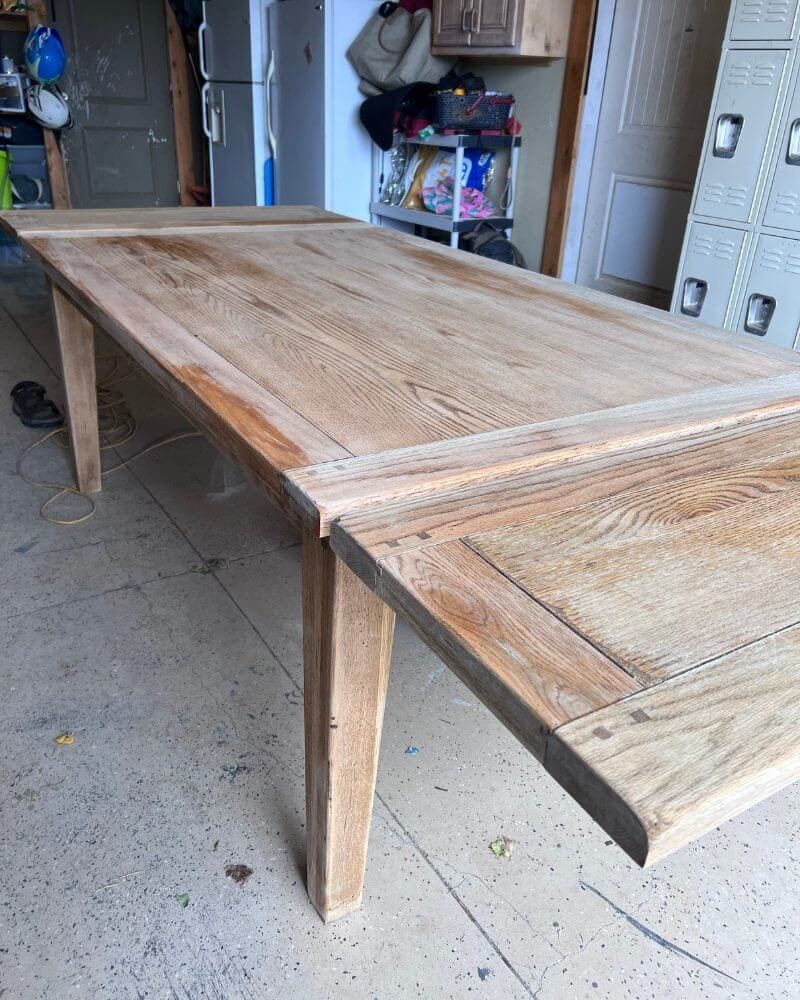
Step 4
Neutralize the bleach. You can use hydrogen peroxide or vinegar. I mix vinegar and water in an spray bottle and spray down the furniture piece.
You need to neutralized the bleach so that it does not keep bleaching and that it wont react with the sealer you choose.
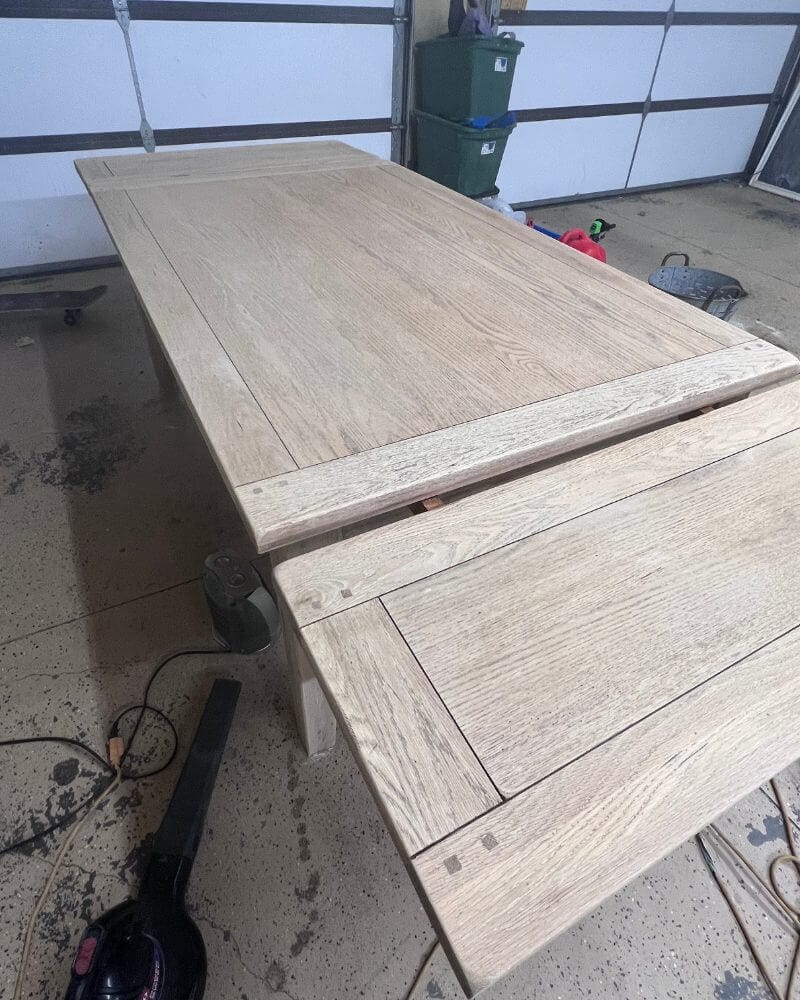
This is what it looks like after two coats of bleach, neutralized, then dried. I love the look!
Step 5
Seal with your favorite furniture wax or sealer.
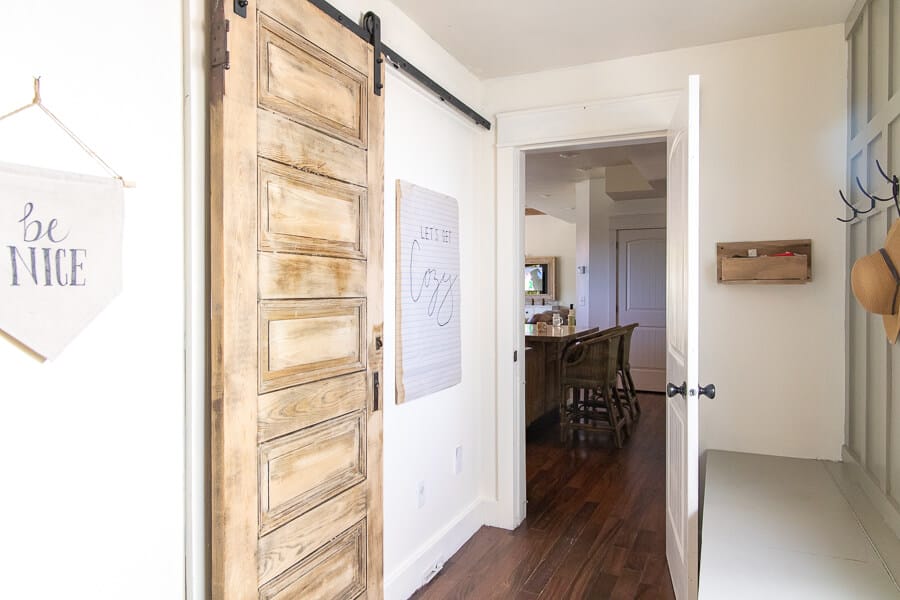
Here is a set of barn doors that I bleached.
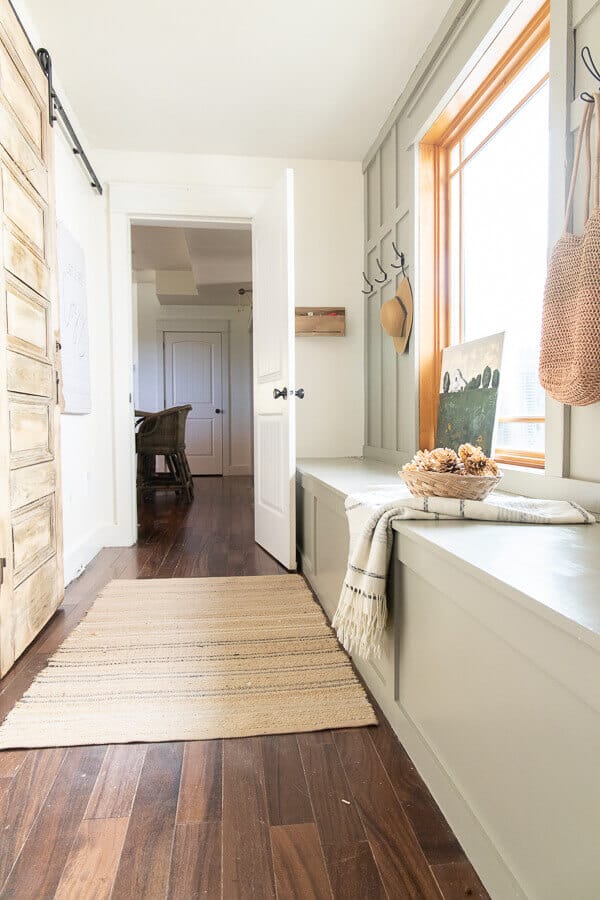
I bleached this antique church pew as well! I love how this turned out as well.

And here is my most recent bleached project. I refinished my 16 year old dining table. I am over the moon with how this table turned out.
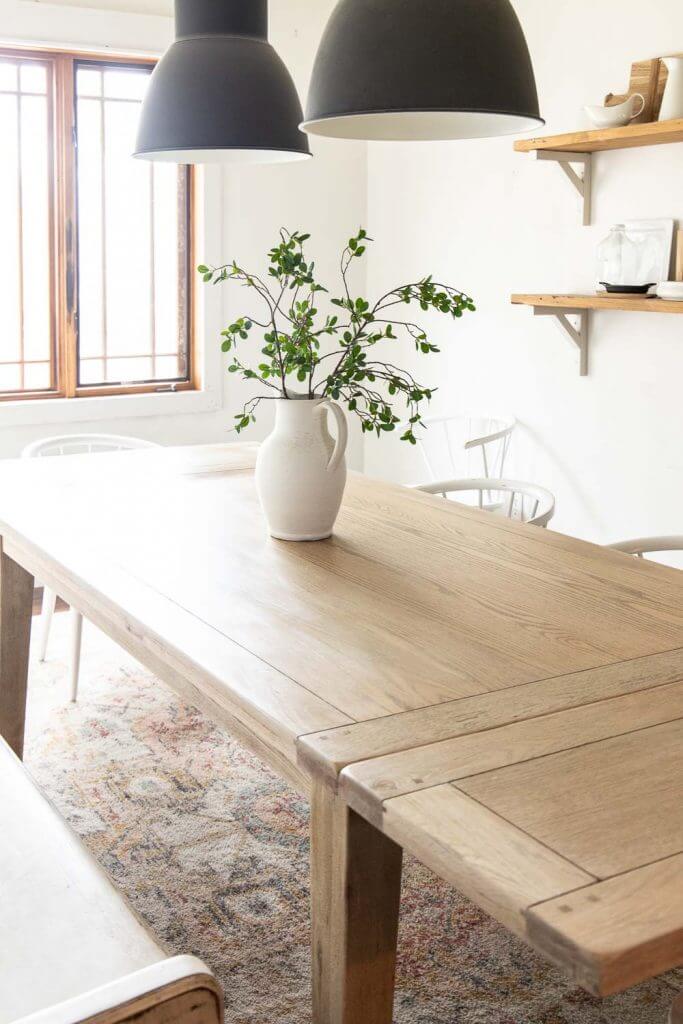
Bleaching wood furniture is a great way to update an old piece. It changes the color of the wood and gives it new life.
I love furniture makeovers and these are my favorite because they. showcase the beauty. of the natural wood. The bleached wood look will always be one of my favorites.
Don’t forget to pin this for later!
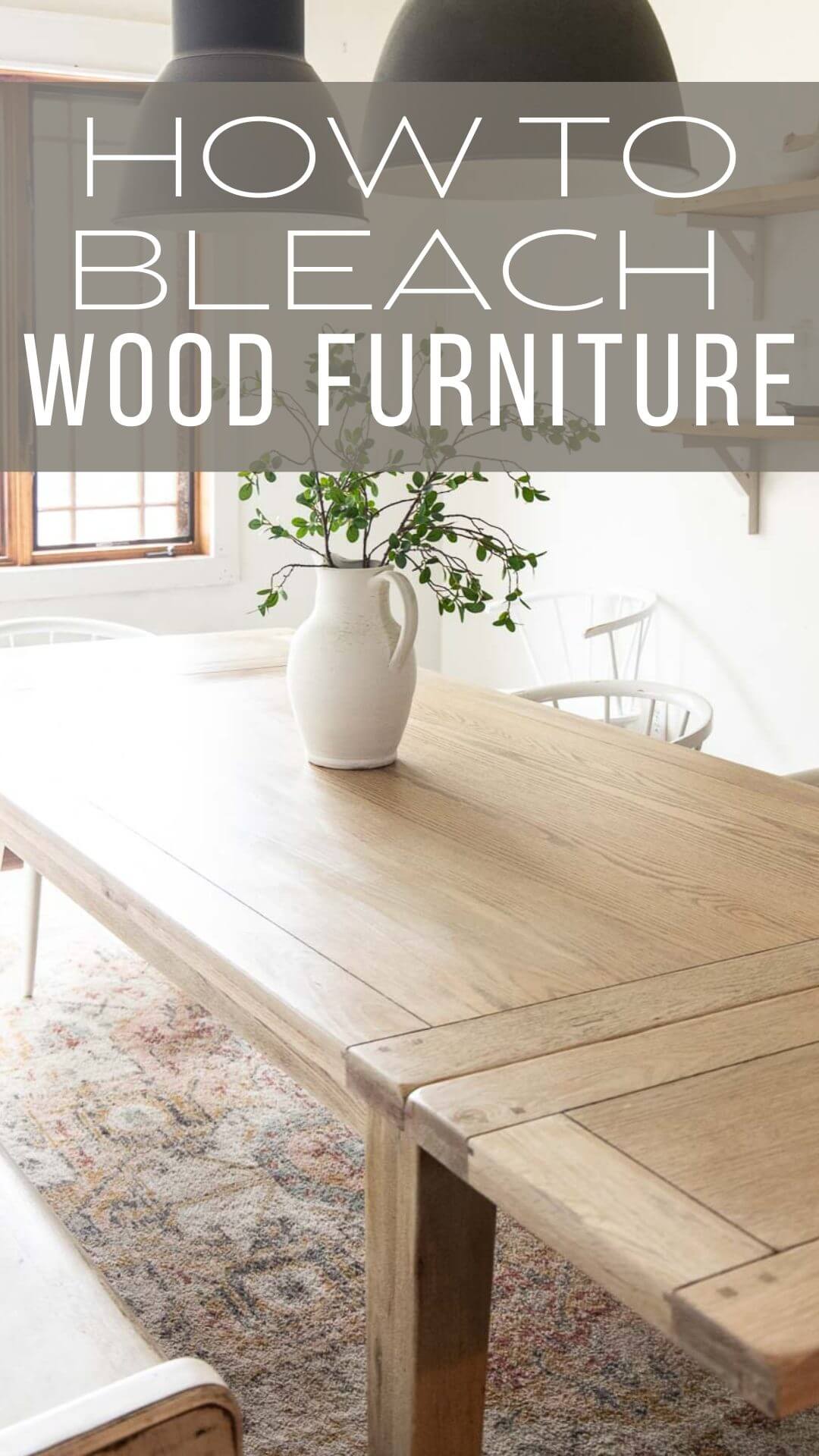

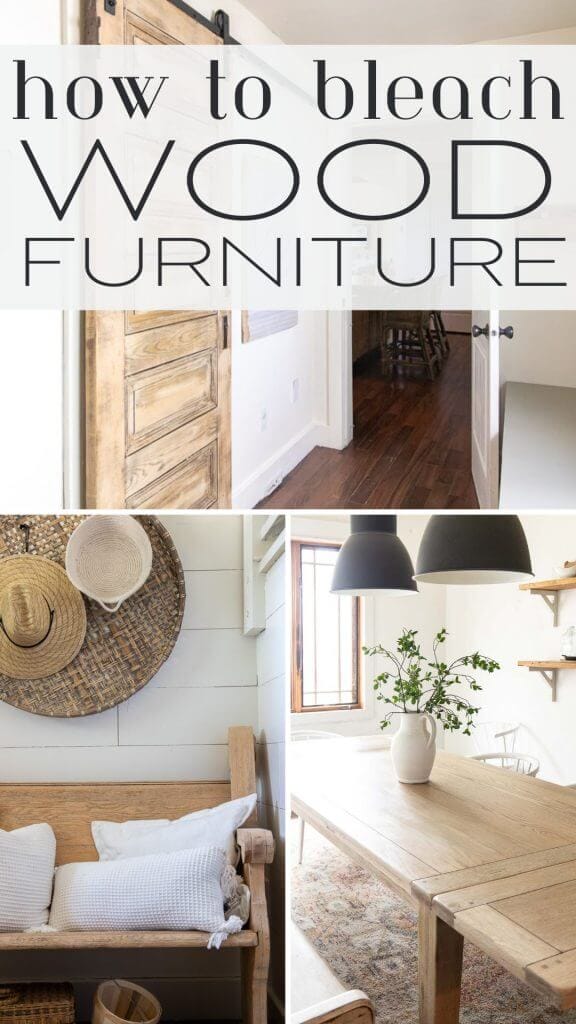



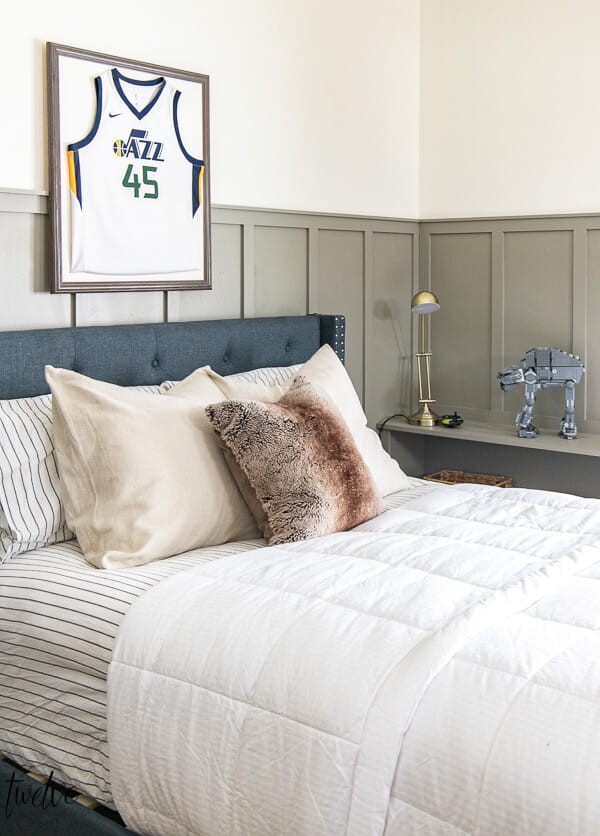

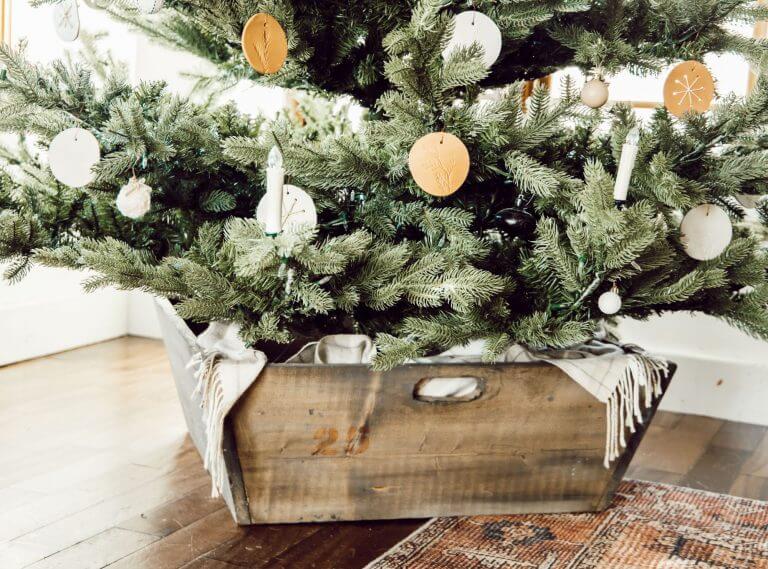
Hey Sara, those are some darn fine looking doors! I wouldn’t change a thing about them.
I’m in a sorta similar dilemma, I like the raw / light colored wood, but I’m dealing with thick cedar wall paneling that’s pretty darn dark. And during my pinterest search I found a single sample of a lime wash technique to lighten up the color. Not quite sure if I have the guts to do it as ‘most’ examples are on cement or stucco, but heck, you only live once …..
Did you happen to see this method in your search??
Thanks you Laurie! You know, I have seen some other methods like the lime wash. They seemed more involved than I had time for but I think it is definitely worth pursuing! You can always try it in a small area to test before you decide to commit. You only live once! That is my philosophy! My other philosophy is, Its only paint! Have a great day!
simply gorgeous…totally worth the elbow grease! sharing!
The doors are beautiful! I just love the original hardware on them! What an awesome find!
– Jaclyn
Your doors are gorgeous! I’ve got some serious envy over here. Thanks for sharing at Merry Mondays!
Your doors are the best I’ve seen yet!!!! Love, love, love them. You did such a nice job. What did you use for the clear coat?
Thanks Melanie! I used a poly acrylic clear coat.
What a cool technique! I’ve never thought of bleaching wood. I love the end result!
Your doors are gorgeous, Sara! They look amazing and the best part is they are unique. Love the color they have and I would have never imagined bleaching them to achieve it. I may try it for a project I’m doing now.
Thanks for sharing with us at Two Uses Tuesday, have a wonderful weeken!
I love the way the doors look bleach. Great ideas, thanks for stopping by the party, my feature for next week
Maria
Your barn doors are what dreams are made of! They are gorgeous! I have nowhere in my Victorian home to put them but I love the look. I have the next best thing…..3 sets of Victorian pocket doors!
These are so beautiful as is your entire blog! I agree with AnnMarie-they are truly what dreams are made of!
Thank you for sharing these beauties with us at TOHOT!
Jemma
Awe thank you Jemma. You just made my day!
Beautiful barn doors and really liking the bleached look. Swooning over your chalk board wall!
Thank you Marie, The chalkboard wall was a bit nerve wracking for me, since I tend to shy away from that much color, but I love the vintage look!
Sara, your barn doors are amazing, and I want to find some just like yours. I have chosen them for my feature tomorrow on Totally Terrific Tuesday. I can’t wait to see your next project!
Thank you Sherry! So exciting! I will be stopping by!
Sara, these doors look amazing! Nice work!
Thank you!
Fantastic Sara! Love how your doors turned out–what a labor of love 🙂
Pinned and Facebooked 🙂
Thank you!
Thanks you Diana, it really was a labor of love!
Sara,
Amazing transformation!
Fondly,
Pat
Thank you Pat!
Beautifully done Tara. I had also seen the buffet that you used for inspiration and love it. Great tutorial. I’m going to pin and share this idea. I thank you for giving us lots of Sweet Inspiration.
Thank you Mary! I love linking up to your party! Have a great day!
Hi Tara – the barn doors are gorgeous…i’m drooling!! LOL! I had pinned the same tutorial from R&R to bleach my pine harvest table but the site is down 🙁 Thankfully you included the steps – just a quick question – did you have to neutralize the bleaching afterwards? I’ve read conflicting things about it – and you used straight Clorox, you didn’t dilute it? Did you leave the doors inside or outside while they were bleaching? I think I might give it a go this weekend!! Thanks for such a great post!
Hi there! Yes, I used straight bleach. I did it outside and let them stay out until they had dried and the smell was gone. Overnight was plenty. I didn’t have to neutralize the bleach, however, I am not sure about using it on a table.
Hi Sara,
This is such a functional and beautiful look!
My husband and I would love to attempt a doorway like this for our pantry.
How wide are the doors? Is the doorway smaller than the doors are wide when they are closed?
Thank you so much, I love your website and design ideas!
Claire
Hey Claire, thanks for stopping by. The doors are about 2 inches larger than the door opening, so when they are closed, the whole door is concealed. Off the top of my head I believe they are 33 or 36 inch wide doors. It was quite difficult to find doors to fit because I was looking for something so specific.
Hi Sara, Thank you so much for responding! This is very helpful! So excited to try this idea out. 🙂
You are so welcome! Good Luck!
Love the doors! All your hard work really paid off! Beautiful!
Love this look! Do you think it would work on raw/new unfinished wood??
Yes I definitely think it would. This was essentially raw wood once it had been sanded down.
I’ve got an old dry sink commode that I’m using for my boys’ bathroom in our new house, and I’m going to try bleaching it to see if I can get this result!
Oh I bet it will look so good!
Hi there! Found you via Pinterest. I’ve always enjoyed reading your projects and this is another one that turned out so beautifully!
just wanted to tell you not to be afraid of stripping anymore. The sanding you did on these gorgeous doors turned out well, but could easily have been a disaster with such a heavy grit and veneers!
If you haven’t already tried Citristrip, I STRONGLY recommend it. In my pajamas, in front of the TV, in my living room, I’ve stripped antique doors like yours down to raw wood with 2 applications. One for the paint layers, and another to suck the stain right out of the wood. The hardest part of the whole thing is leaving the Citristrip alone to work. It’s so COOL! It neutralizes with water and I’ve not required sanding on any of my pieces. I have taken a 220 and smoothed down the raised grain, but sanding? Scraping until you die? Flesh eating chemicals? Not any more.
I’ve also used bleach on wood as fickle as cherry and as easy as maple. What I have found, though, is that stubborn water stains require something a little tougher. I’ve used oxcylic acid with water, applied with a toothbrush. It neutralizes with vinegar.
Anyway, your doors are gorgeous — as are mine! LOL! 15 pocket doors from these gorgeous antiques. I’ve linked to my page about my Citristrip journey, but my end pics stink, so it’s hard to see. I’m not a pro blogger, having just created these pages so my long-distant sisters can see my projects, but I thought you might enjoy watching the new century’s stripping methods. I also hope you’re enjoying your beautiful doors!
Thanks for all the info Christine! I will check out Citristrip!
Here I am, back again. Just looking around.
I just finished another set of doors. French, this time. Citristrip did the trick once again. Stripped them down in less than 3 hours. I always have plans to stain or paint, but like you, I just get mesmerized by the beauty of this raw wood.
I thought I’d share another trick with you to protect the wood, invisibly! Pick up some paint BASE, that’s used for black to navy colors. It goes on white, which panicked me. It dries, however, so absolutely invisible and matte you don’t know it’s there. I choose Exterior, flat, latex, dark (BM’s is a 4 or 5) paint base. Exterior gives it all the UV and water protection. I just can’t put something shiny on my beautiful doors!
Keep up the good work. I really enjoy your style.
Wow! I have never heard of this! Thank you so much for the amazing tip! I will definitely try it out! Have a great day!
Your door is absolutely gorgeous! I have a project that I have been working on for over a month to try to achieve this look and I’m getting very frustrated! I have an oak dining table that I sanded down to the raw wood and bleached it and it has a beautiful grain and is a very gorgeous color much like your door. I neutralized the bleach with a vinegar wash but that took off the graying that the bleach left (that I loved)! Everything I read said that it needed to be neutralized or you risk the bleach reactIng with the finish. I read that you did not use anything to neutralize so I think I may put on another coat of bleach to get back that beautiful color that I wanted. Did you sand at all after your final bleaching? Also, I need to put a topcoat on to protect the table. What brand and exact poly acrylic clearcoat did you use? I have tried many and when I put them on the Raw whitened wood it brings back the yellow/Amber/orangey color that I hate! ( the color the wood would be if it was wet) Did you notice any darkening or yellow or amber color in your door after you put on the topcoat? Also, do you know what kind of wood your doors are made? Thank you so much for any help!
Hi there! I just stumbled upon your post and love the doors! I have stripped a ton of furniture and agree, it is messy and tedious work. I recently stripped an old maple desk and wanted to get that natural finish like you wanted. I stripped I and sanded it down to raw wood, and then rubbed in Annie Sloane’s dark wax. OMG. It looks amazing. The Annie Sloane people had never seen that done before – usually it is rubbed on over their chalk paint but I applied to raw wood. I wish I could ad a photo here! I want to try bleach on my next project though!
Oh I would love to see a photo! Sounds wonderful!
Great job on the barn door, it looks fabulous. But I have one question for you. How loud is it when the door is opened and closed?
Thank you! Its not very loud at all.
WHOA! These doors are simply stunning!! Makes me want to bleach ALL THE WOOD now!!!
Thanks! Me too!
These turned out great. I thought you meant that the original doors were barn doors. I love that you were able to reuse these doors. I have huge, original, real barn doors that may or may not be used when we redo the barn and they have that original red milk paint type finish. My house isn’t big enough to use them and I would hate to cut them down but now I’m wondering how to use them somewhere. Great job. You have way more patience than me.
What an amazing find with those original doors! I hope you are able to incorporate them in some way!
HI, Sara!
What do you think about Renaissance Chalk Paint? I’ve read about it in this article. Would it be good for my wooden doors or there are better options?
Thanks. Appreciate!
Amazing! What a transformation. Creative and Elegant.
Love love it!
Can you tell me what kind of wood the barn doors are? I have an old Douglas fir door that I’m working with. I got discouraged after stripping the finish but wondered if I gave up too soon. I’ve been preparing it for paint. Now wondering if I can achieve this look!
I think they are oak, but I am not 100 percent sure